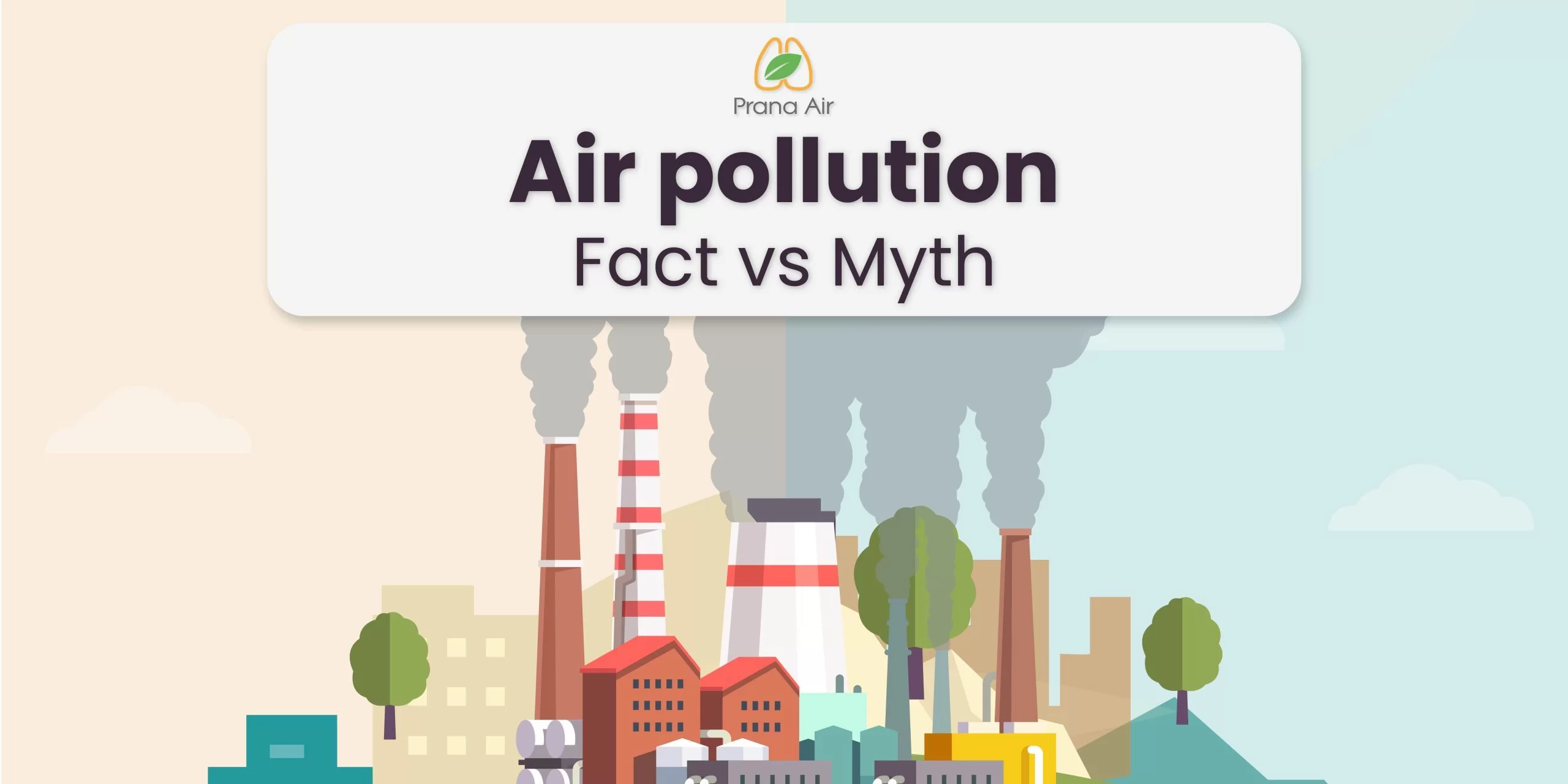Air is dynamic and many external factors can influence the natural composition of air. These include natural as well as human related reasons that can alter the natural composition of air, and affect the air quality. The air quality can change over different geographical areas depending upon the physical factors that exist at a specific location. This deterioration of air quality due to various natural and man-made reasons is known as air pollution. But is it really that harmful that many believe it to be, is air pollution a fact or a myth? Let’s find out.
There are a lot of misconceptions regarding air pollution out there. Despite the widespread claims to the contrary, air pollution is just as harmful to health.
Some of the air pollution myth/fact are as follows:
1. There is no such thing as indoor air pollution
We spend more than 90% of our life indoors. Indoor air can be as bad as the outdoor air, even worse if proper methods and mitigation strategies are not followed. In enclosed spaces it becomes even more essential to monitor and maintain the indoor air quality. Women and children spend most of their time in households, hence affected the most from household emissions.
Many factors can affect the indoor air quality including the ventilation rate, number and variety of sources a place is exposed to, and many more. These sources are different on the basis of where they exist.
For example; a typical home environment will have different air pollutants and sources as compared to workspaces, hotels, and many other indoor environments.
Air pollution sources present inside a household:
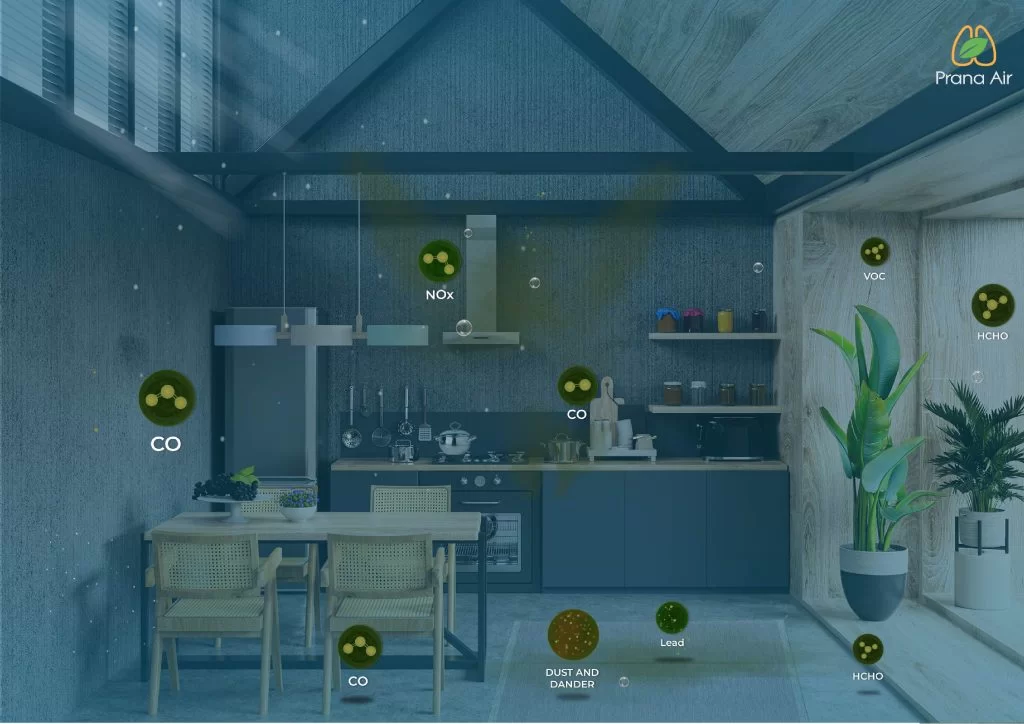
- Cooking- CO, NOx, VOCs
- Tobacco smoke- VOCs
- Unmaintained gas appliances- CO
- Carpets- Particulates, mould spores, lead, dust mites,Pet dander, dust.
- Paint- VOCs
- Furniture (especially new furniture)- HCHO
Some air pollution sources present in classrooms/offices:

- Occupancy rate- More people means more CO2 in a room, and higher chances of spreading of viruses and infections
- Cleaning agents- VOCs
- Paints, markers, and hobby craft- HCHO, and TVOC
- Photocopiers and printers- O3
- Insulation material, floor or ceiling tiles: Asbestos
WHO facts regarding indoor air quality:
- In 2020, household air pollution was predicted to cause 3.2 million deaths per year, including approximately 23,000 deaths among children under the age of five.
- The use of kerosene or solid fuels for domestic energy needs results in poor indoor air quality that contains carcinogens that are responsible for about 11% of lung cancer deaths in adults.
- 23% of the deaths are caused due to strokes from exposure to indoor air pollution.
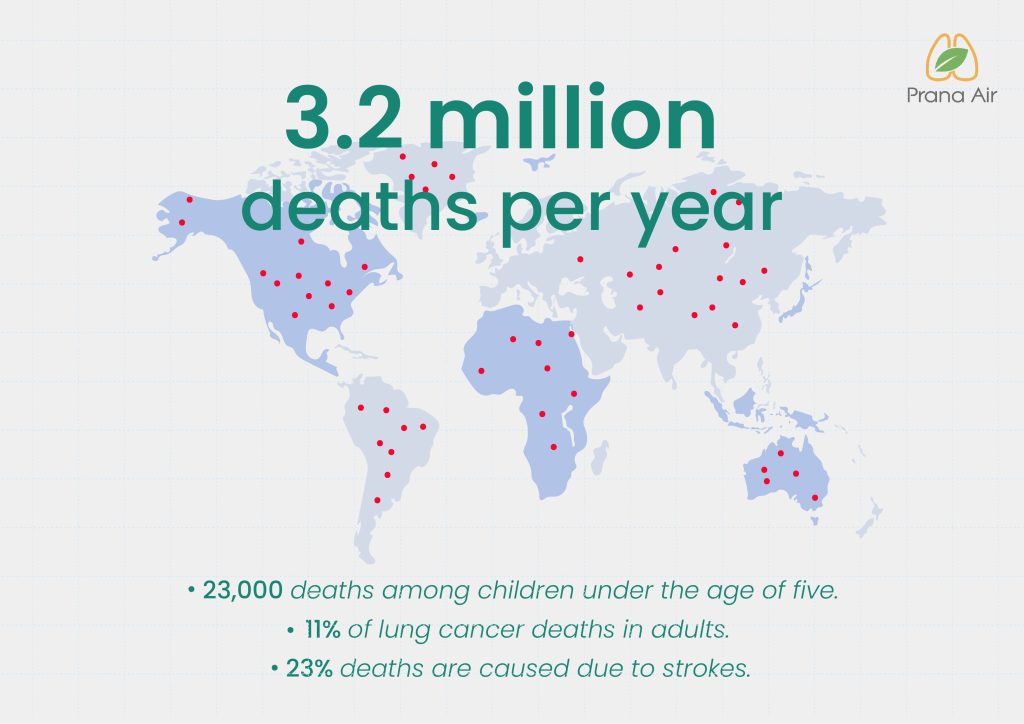
2. Only prolonged exposure to air pollution is harmful
It is one of the most common air pollution myths that only prolonged exposure to air pollution is harmful to the human body. Air pollution can and will affect a person’s health even in the shortest intervals of time. These are known as short-term air pollution effects. These include symptoms like irritation in the eyes, nose, and the throat, headaches, nausea, sleepiness, allergic reactions and many more, that can cause discomfort.
Some air pollutants are dangerous from others, and even exposure for shortest time intervals can have serious effects on one’s health. These pollutants are PM2.5, NO2, Black carbon, ground level ozone, and methane.
3. The number of deaths caused by air pollution is overestimated
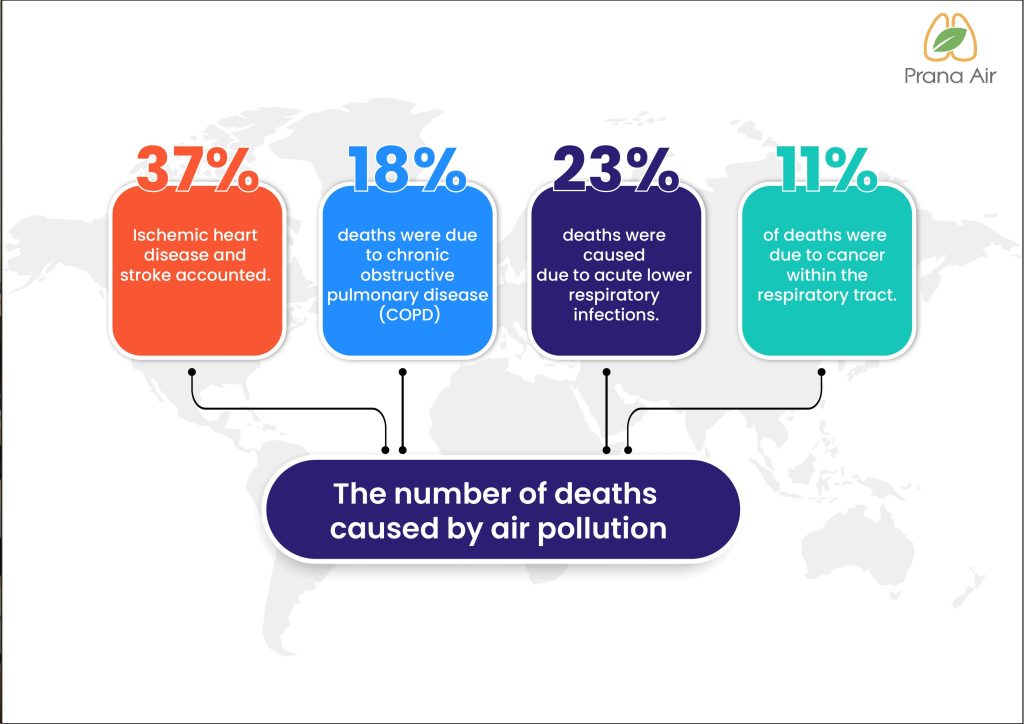
A report by the WHO says that more than 7 million people die due to air pollution every year! It is a proven fact that air pollution causes various cardiorespiratory disorders, aggravates respiratory disorders like asthma, affects mental and physical growth in children, triggers strokes, and has effects on lungs and heart. According to the WHO (World Health Organization), air pollution in responsible for:
- The combined effects of residential and outdoor air pollution are responsible for 6.7 million premature deaths annually.
- Ischemic heart disease and stroke accounted for 37% of outdoor air pollution-related premature mortality.
- 18% of the deaths were due to chronic obstructive pulmonary disease (COPD).
- 23% of the deaths were caused due to acute lower respiratory infections.
- 11% deaths were due to cancer within the respiratory tract.
4. Wearing any mask will protect you from inhaling air pollution
Air pollution is a serious issue, where 9 out of 10 people are inhaling polluted air that exceeds the WHO’s air quality standards. That is, if suitable mitigation methods are not implemented to lessen the consequences of air pollution, we may become part of the mortality statistics. To combat air pollution effects, an effective N-95 mask will help you breathe clean air. It would not only save you from inhaling dust, pollen, allergens, but also virus and infection inhalation.
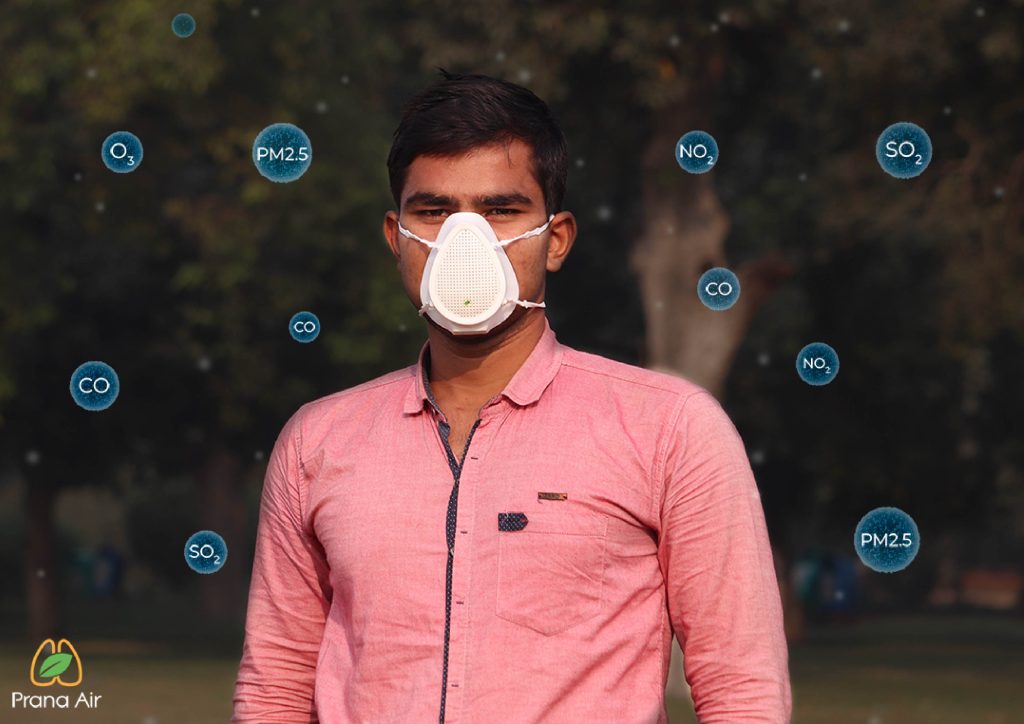
Improper masks such as surgical masks and cloth masks are not as effective. It’s like bringing a knife to a sword fight!
5. Only the winter months experience poor air quality
Air is dynamic, and air pollution can exist irrespective of the season. Winter season has a significant effect on air pollutants, but that does not mean that air pollution around summers isn’t as dangerous. The visibility of air pollutants is much more visible around winters due to a phenomenon known as inversion, as grey skies become more visible. Otherwise, air pollution is as harmful in summers as in winters.

According to a Greenpeace study that analyzed air quality in every Indian state throughout the year, PM, O3, and NOx levels were consistently higher than the annual average permitted by the CPCB.
6. Only sensitive groups need to worry more about the air pollution
Effects of air pollution are not limited just to a specific category of people. Each category of people experience the adverse effect of air pollution. Sensitive groups experience it the most, but air pollution can affect a healthy individual as well.
Sensitive groups include children, people with underlying health issues, pregnant ladies, and old age people.
Children: Air pollution has an adverse effect on cognitive, neurological, tissue, and cell growth.
People with underlying health issues: Air pollution acts as a trigger to various underlying issues such as heart disorders. Air pollution can exacerbate existing poor health.
Pregnant ladies: Air pollution affects the prenatal growth and affects the expectant mothers as well.
These are just a proportion of the population that are affected by air pollution a little more than a healthy individual, but it does not make that individual immune to the effects of air pollution. Air pollution affects everyone, sensitive groups are more affected than others.
7. The biggest cause of air pollution is vehicular pollution
Vehicular pollution plays a major role in air pollution composition, but it is not the biggest cause of air pollution. In India, the biggest contributor of air pollution is construction and dust (59%), followed by the waste burning activities. According to Chandra Bhushan, an environmentalist, India burns approximately 2 billion tones of substances to either dispose of waste or generate energy. Coal burning, lignite (for electricity), biomass (mainly for cooking), and agricultural residue (waste disposal) account for three-fourths of this; oil accounts for roughly 10%. We are overlooking the forests for the trees by focusing all of our efforts on reducing automotive emissions—a relevant but insufficient requirement for pollution control.
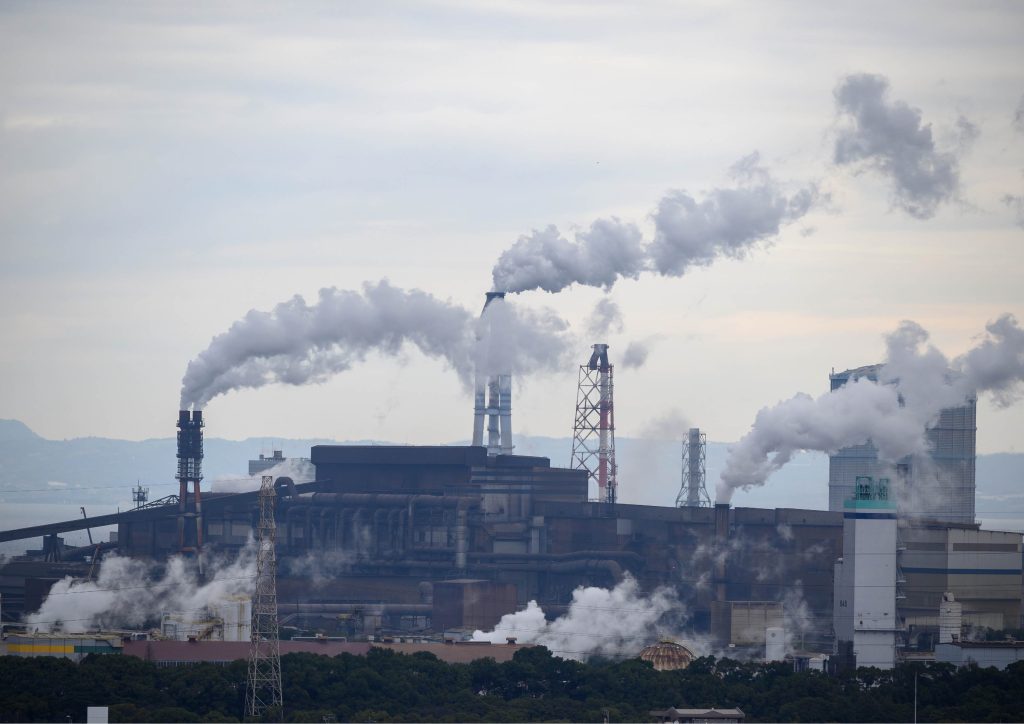
8. When there is visible air pollution, it is dangerous
Visible air pollution is dangerous for our health, and can cause various short and long-term health hazards. But invisible air pollution is even worse. They are silent serial killers, you won’t even know they are present. They have the ability to kill you!
Therefore, proper monitoring methods must be adopted to keep an eye on the invisible air pollution around you. This will not only give you the power of knowing which pollutant you are exposed to, but will also help in mitigation strategies. Each air pollutant has its harmful effects that makes measuring and controlling these pollutants extremely important, present both indoors and outdoors.
9. The lungs are the most vulnerable to air pollution
Air pollution has both short-term and long-term effects on the human body, not just on the lungs but also on many other body parts, bodily processes, and functions. Air pollution significantly affects:
- Respiratory system
- Heart
- Tissue and cell development
- Cognitive growth
- Liver
- Kidney
- Reproduction system
- Nervous system
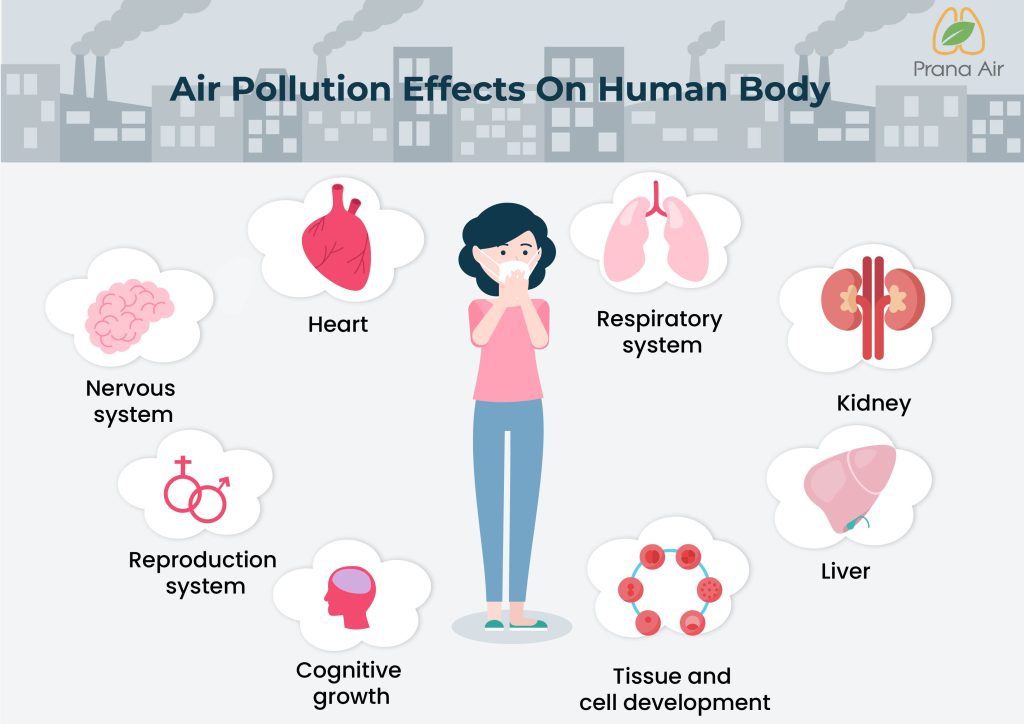
10. You can’t do much on your own to combat air pollution.
“Carpooled thrice a week to work”, “Bicycling instead of using a car to cover short distance”, “Compost out of fallen leaves instead of burning them”, “Used public transportation twice a week”
As they say, ‘Many a little makes a mickle’, even the small steps matter. Your slightest efforts to combat air pollution counts. Fact is that each individual can make a difference. Some ways to curb air pollution as an individual:
- Adopt greener fuels that have lower emissions
- Carpooling and using public transportation whenever possible
- Monitoring the air quality
- Wearing perfect fitted N-95 air quality masks on bad air days
- Drive awareness among communities
- Maintain the indoor air quality using plants
- Adopting air purification solutions for indoors
- Keep your vehicles in check- Exhaust Emission Index
Conclusion
These are the most common myths out there when it comes to air pollution. We as a community should be aware enough to know that air pollution is a bigger issue at hand. Governments are fighting their fight against air pollution. All the facts and statistics confirm that air pollution is not just a myth, but a harsh fact, reality that we must realize sooner than later for our own good. Future generations will suffer if air quality continues to deteriorate. Not only humans but plants also suffer from the air pollution. Air pollution has the ability to alter natural behaviour of plants and can hamper their growth.
Hence, it becomes important to realize what is at stake, and take concrete steps in controlling the sources of air pollution. Air pollution is not just a myth, but a fact, a reality.

